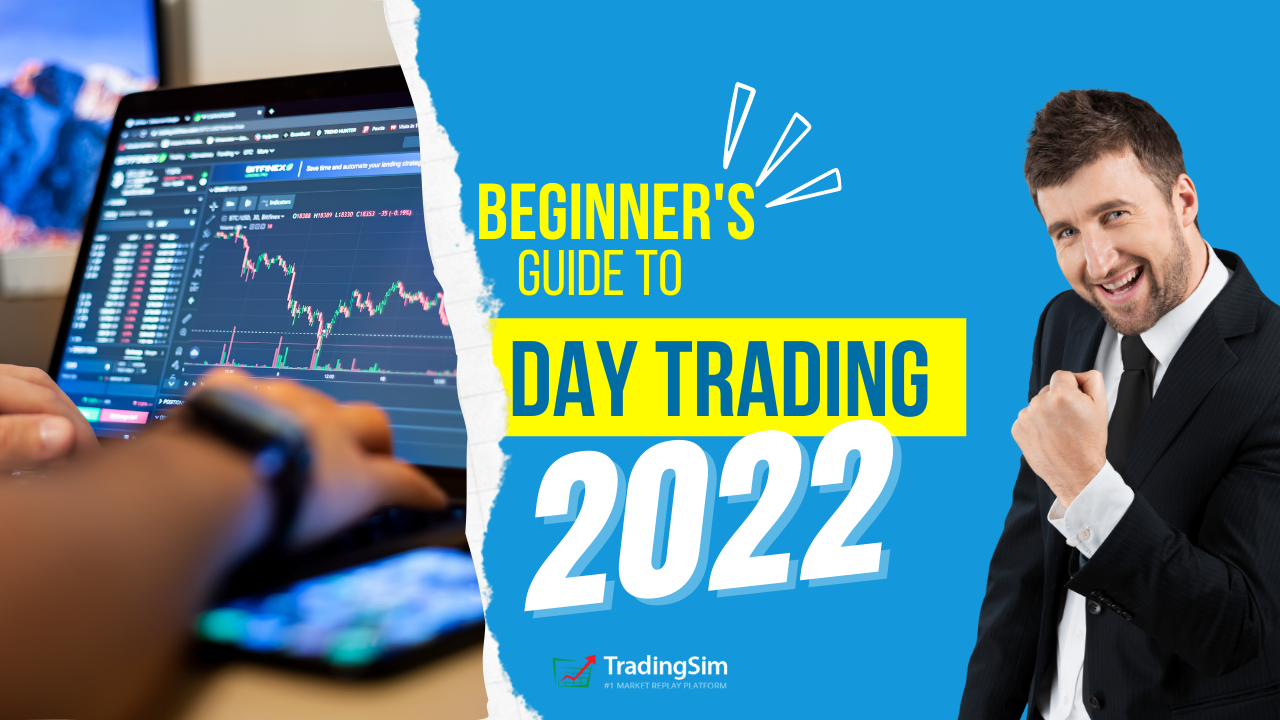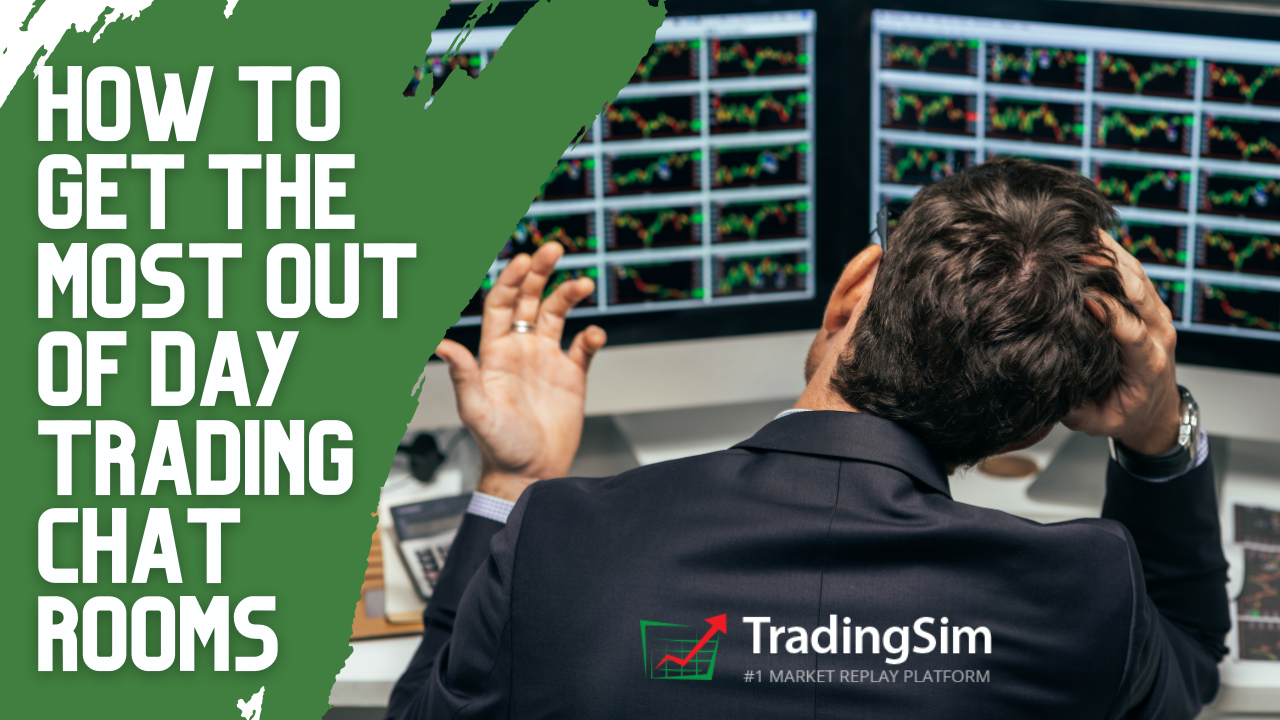
Finding the Most Active Stocks to Day Trade [Video]
There are thousands of stocks you can trade on any given day. For that reason, picking the most active stocks each day can help you narrow your universe of ideas.
The potential number of trade opportunities can feel overwhelming to the untrained eye. For example, do you pick popular stocks like Apple or Google to trade? Or, do you just play IPOs and shoot for a quick flip based on the hype? All of these questions have to be fleshed out as a part of your daily trading plan.
Each day, it should be your goal of scanning the market for the best “stock movers today.” Your goal is not only finding stocks that best fit your trading methodology, but which are also the biggest market movers. The task is not as simple as just having a list of high volume stocks that you can trade every day and make boatloads of money.
Learning how to find the best stocks to day trade requires work and quite a bit of research on your part. In this article, we’ll illustrate 7 tips and tricks you can use to find the most active stocks to day trade, the biggest pre market movers, and the highest volume stock each day.
Start Your Day Early Searching Pre-Market Gainers
Regardless of which approach best fits your day trading style, the one thing required for each selection process is that you must get an early start to the trading day.
Gone are the days where you can arrive at 9:15 am, log on to your broker, and start placing trades. The market is getting faster and faster with the increased trading volume from hedge funds. At a minimum, you should start your prep work at 8 am market time.
This will provide you enough time to conduct your morning research and configure your monitors with the stocks you are actively tracking for the day. As part of this process, you will want to pay close attention to the pre-market gainers that are populating your scans. These are usually the best day trading stocks.
#1 Find the Best Stocks to Day Trade with Biggest Pre-market Movers
For those of you that have been trading for some period of time, you will know that the pre-market is one of the street’s favorite ways to take advantage of you.[1] A stock could be up 6% in the pre-market only to open up 2% at 9:30 am. The reason for the large price swing is due to the thin volume that can carry a stock in either direction outside of the regular trading session.
We recommend starting your scans around 8:00 am sharp, well before the opening bell. This gives you a full hour and a half before the market opens to conduct your research. Along those lines, here is a list of what you want to look for when scanning for the best stock movers “today”.
- Stocks gapping at least 2-5%. The gap needs to be healthy. However, since 2020 and the pandemic, pre-market stock movers are gapping higher and higher
- Volume needs to be somewhat heavy. If you see a stock up 20% on 200 shares, then look the other way. Ideally, Relative Volume should be well over 100%
- Once you see a stock that is up on decent volume, you’ll want to check the news and whether or not there is any dilution risk.
- Make sure you review the broader value of the futures market for the major indices (Dow, NASDAQ and S&P). While breakouts can move independently of the market, it’s always a good idea to go in the direction of the broad market.
Setting Up Your Scans for Today’s Biggest Premarket Movers
Your trading platform should provide you with the pre-market movers; however, if the scans are not thorough enough, below is a list of resources:
- NASDAQ pre-market values
- Stock Market Analysis – list the pre-market movers every morning
- Stock Market Watch – provides top gainers and losers but also displays the pre-market value of the major indices.
There are other high powered scanners out there, but to be honest, all you really need is a method to see the top gainers and losers. However, here at TradingSim, we offer a simplified scan filtering engine that will help empower your training experience. There’s no better way to get your feet wet finding the biggest premarket stock movers.
The constant need for more information throughout the day will likely lead to overtrading or too much confidence.
Not to mention, some of these scanners can get pretty costly. You need to prove you are able to make money with the most basic of scans before scaling up to the pricier options.
Examples of these pricier scanning options are Trade Ideas and Finviz. What these sites lack in design they more than make up for in their ability to provide you with more scans than you can ever dream of needing.
Choosing the Best Penny Stocks to Trade?
Now that we have covered the more conservative point of view for pre-market trading, let’s delve into the wilder side of trading – low float stocks.
Low float stocks are not for everyone as the price moves are significant. [2] These low float stocks are likely penny stocks that trade under $5 dollars. Since the covid crash of 2020, these penny stocks have become much more popular and liquid. Some of them may reach into the 100s of millions of shares traded. However, they can be risky.
Please note, if you go down this path, do not use more than 5% or 10% of your bankroll on each trade. This is more of a game where you play the pop, but you are not making a long-term investment. Odds are that these stocks are priced cheaply for a reason and will eventually drop quickly.
For an example, check out our article on the 1-3pm Bloodbath Setup. It’s a great way to play penny stock movers to the short side.
Find a Clean Pattern with the Highest Volume Stocks Pre-Market
As we mentioned earlier, you want to avoid charts that have low volume in the morning. How do you know you are dealing with a chart with low volume? Just check out the image below.

Basically, if you feel like you are looking at stars in the midnight sky, the volume is too thin. When we say stars, we’re not talking about candlesticks – we mean literal dashes on the charts.
The pattern you trade is solely up to you. Some of you may like ascending triangles, while others may look for red to green setups (meaning the stock starts lower but later exceeds the morning highs).
Scanning for the Biggest High Float Market Movers Each Day
If you’re not interested in low float penny stocks, you’ll want to find the highest volume stocks with high float. Why high float?
These are the stocks that can safeguard your investment with a more certain move in the morning.
On average, you’ll find between 2 and 5 stocks that have both the volume and the necessary float requirements to be a real market mover.
The key for you is only trading one or two of these setups per day.
Running your scans, you should see a list of stocks like the one below:

As you can see, there are a few stocks on both the long and short side that are likely good candidates for an opening range breakout or breakdown trade.
Now that we have covered pre-market movers at length, let’s shift our focus back to other ways of identifying great day trading opportunities using the most active stocks of the day.
#2 Finding the Highest Volume Stocks Today
Assuming you have hundreds of thousands of dollars at your disposal you will need a stock with enough volume to allow you to quickly enter and exit the trade with ease. Everyone’s criteria may differ, but our personal minimum is about 40,000 shares per 5-minute bar.
This, of course, depends on the price of the stock and the float. Perhaps you don’t have a large account. If not, be sure to check out our small account strategy.
If you have a brokerage account, your respective firm should have a most active stocks list. This is a good place to start, but will only contain the top 20 or so stocks. You’ll need a scan that is a little broader and provides you with trading opportunities that are not being tracked by every investor. You may want to also find stocks that are rising on high volume relative to their average volume.
For example, if a stock normally trades 2 million shares a day but has 5 million shares traded before 10am, this is something of note. You may be saying to yourself, well these will show up in the most popular stocks in my trading platform. Unfortunately, this is not always the case. Again, your brokerage platform may only return a maximum number of stocks (i.e. top 10, 20).
If your trading platform does not provide you with a robust screener for the highest volume stocks, below are some great resources:
- Unusual Volume provided by Yahoo Finance. [3]
- Bar Chart provides a list of over 200 symbols [4]
- The Street provides not only the high volume stocks but also has a scan for stocks trading under $5 for all you penny stock lovers out there [5]
#3 Develop your Own Watchlist for Daily Market Movers
You will need to develop your own list from stocks you follow on a daily basis. Again, due to a large number of stocks on the exchanges, it’s best to focus on specific sectors. Below is a list of popular ones:
- Banking
- Precious Metals
- Semiconductor
- Automotive
- Pharmaceuticals
- Retail
- Internet
Once you have one or two sectors you would like to follow, begin to track the movement of the top issues. Give yourself a few months of consistently watching the stocks and the sectors in terms of their price movements.
As a follower of the Richard Wyckoff method, you’ll learn that each sector and stock will have an ‘operator’ that is in control of the market action. This operator is the collective investors or market makers with the most money in the stock; therefore, they have a controlling interest.
Using Gold as an Example
Let’s take an example from the ’08 market.
Every day like clockwork stocks Royal Gold (RGLD) and Golden Star Resources (GSS) would have sharp reversals at 10 AM. A system of buying or selling short on breakouts of the morning’s trading range would fail consistently with these precious metal stocks.
While experience would’ve taught you to avoid this particular sector for 6 months, you could use the watch and learn approach to understand how a particular market moves in order to gain an edge over other traders.
The one challenge with building a list is limiting the number of stocks you watch within 1 or 2 sectors down to the biggest market movers. You are manually tracking these stocks and building a sense of touch for how they trade. At most, you should only track 10 stocks per sector, so this gives you a maximum of 20 stocks you can follow at any one point.
This should give you a feel for not only the stocks in the sector, but if they are real stock movers, and whether or not they fit your strategy.
#4 Keep Up with Historical Market Movers
Instead of looking to someone else for advice on what the best stocks to day trade are, how about looking at your own trade performance. There is at least one stock you trade on a regular basis for one reason or another.
Funny thing is you will not be able to explain why you keep gravitating to that particular security. Call it your soul mate or just your stock of choice. Your comfort level with the stock will make you feel like you “own” its movements.
You can move in and out of the stock with ease and generally make a profitable trade on each attempt.
For me, I couldn’t get enough of Baidu Incorporated (BIDU). For all of you fans of the show Scandal, she was my Olivia. I would track BIDU every day even if she wasn’t moving much. For some reason, I was able to predict her movements and never found myself fighting the trade.
So, look back over your trade history. Is there one stock market mover that keeps popping up on your list of trades?
#5 Social Media Stock Movers and Pumpers
This is a more recent technique for scanning the market. It can be a bit tricky, however. The reason for this is that searching social media sites or reading news events might positively or negatively impact your view on a stock.
We recommend basing your trade decisions solely on the price and volume action of the stock. That being said, there may be some underlying sentiment on social media that is worth knowing.
Play StockTwits
StockTwits streams the hopes and random thoughts of investors for many securities. They even have a market sentiment factor which displays at the top of each wall for the respective stock.
In terms of which stocks most active stocks to day trade, if you visit the homepage you will see a list of stocks across the top which are trending.
These are stocks that members are actively discussing as Stocktwits plays. You will quickly notice that these are the stocks in the news. Nonetheless, there are times when members are discussing a move in a stock during the middle of the day before a news publication is able to produce an article.

The best method for using StockTwits without a doubt goes back to the list of pre-market movers. You can, of course, look at the news event which is pushing the stock higher or read the latest press release from the company, but StockTwits allows you to get a real pulse of the market.
You can actually use StockTwits as a method to validate exactly how much interest there is in the stock.
If you see a stock up 10% but with only two tweets, it’s likely not in play.
However, if you can find the stock that is up on heavy volume and the board for the respective security on StockTwits is very active, you likely have a stock in play.
Remember, it’s not about the level of bullishness or bearishness on the board – all you care about is if people are talking about the stock you have an eye on.
Swaggystocks.com Popular Active Stocks List
Similar to StockTwits but with a twist, is the popular sentiment lists being viewed on swaggystocks.com. Swaggystocks essentially crawls many of the popular social media outlets like Twitter, WallStreetBets, Reddit, and more. They compile the most mentioned stocks into cute little charts that tell you what’s trending.

The cool thing about swaggystocks.com is that they offer many different social sentiment lists that are updated frequently throughout the day. What this can do for the retail trader is give insight into what stocks are most active. You might find a potential market mover or high volume stock from this list.
Of course, as with any stock in play, you want to have a setup and a trade plan. Don’t be a bag holder just because AMC is being mentioned a lot on Twitter. Stick to your edge.
TradingSim Historical Market Movers Scanner
TradingSim’s market movers scan provides a list of the top 50 losers and gainers for every session in the market going back 3 years. For most brokers, they don’t keep track of this data. To that end, you’ll have a tough time identifying which stocks were trending on a given day in the past.

Market movers inside TradingSim will allow you to pick a random day 6 months in the past and actually see what the most active stocks were for that day. Just as you would research and track the hot stocks for each morning, market movers automatically provides this function for you on historical days. This way, you can just focus on practicing day trading.
#6 Monitor the Earnings Calendar for Potential Active Stocks
One event that is sure to bring about increased volatility is the reporting of earnings. This occurs quarterly throughout the year.
Be sure to keep track of who is on deck for the week. That way, you can start to monitor how the stock is trading going into the earnings announcement.
To be clear, we are NOT advocating you place a trade before the earnings are reported, because this is another form of gambling. You will, however, want to know who are the upcoming market movers and most active stocks for that day, so you can add them to your watch list.
This will reduce the amount of research required prior to the market open. Below is a list of sites that publish earnings calendars:
#7 Focus on One or Two Stocks from Your Most Active Stocks List
Focusing on one or two securities is all about keeping it simple. In all of the above examples, you would need to scan, watch, and react quickly on a daily basis to a large number of issues.
If this is something that you feel is too much and you want to become a master of something simple, then look to trade the same one or two issues every day. Or, at a miminum, choose only a few of the highest volume gainers or most active stocks each day.
Selecting a Stock to Trade from Your Most Active Stocks List
When selecting a stock to trade, you have two approaches: (1) select the most popular stock or (2) pick your favorite stock based on your past trading performance. #2 will largely depend on your own trading preferences, so we’ll cover a few top stocks for day trading:
- AAPL (Apple) – high volume and great price action. The popularity of the company has transferred over to the stock’s popularity in the trading community
- S&P 500 Spiders (SPY) – While this is not a stock but an ETF that follows the S&P index, the volume is huge and provides the means for you to trade the index without trading futures
- QQQ – formerly known as the QQQQ has been a fan favorite of active traders for over a decade
- TSLA (Tesla Motors, Inc.) – if you like volatility, the stock moves as fast as its cars
- NFLX (Netflix) – the CEO is willing to make bold decisions, this has translated into significant price swings in the stock
- FB (Facebook) – there are few stocks that have polarized traders as much as Facebook
It’s safe to say we are a little biased towards the NASDAQ when it comes to day trading. The NASDAQ’s ability in the late 90’s to facilitate order flow has forever stamped them as the preferred index for active traders. You’ll typically never fall short of a daily market mover or high volume stock on the NASDAQ.
Below are the benefits of trading one or two stocks:
- Learn the trading pattern and personality of the stock
- Identify the technical indicators best suited for the security
- Less stress
- Less work to do before and after the market close
In Summary
There are multiple ways to select the best stocks for you to day trade. Remember, trading is a journey, so don’t try to figure it all out in one day. Just make sure your scan provides you the means to trade high volume stocks with a sound system that consistently makes you money.
If you do decide to create custom scans, you will want to focus on the following key areas:
- high volume stocks
- gappers
- pre-market movers
- red to green and green to red moves
- consecutive number of red or green candles
- biggest stock gainers and losers
Results for these 6 scans will provide you more than enough as a new trader.
We hope you found this article to be helpful in your quest to find the most active stocks to day trade. If you would like to see how we can help you further, come over to Tradingsim.com and give our market movers a shot. We’re sure you’ll find our top stock mover tips useful.
Here’s to good fills!
Photo Sources
Stock Ticker – francisco.j.gonzalez
















































